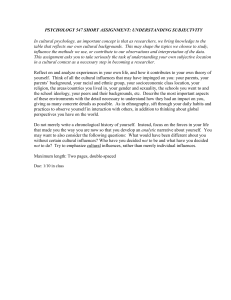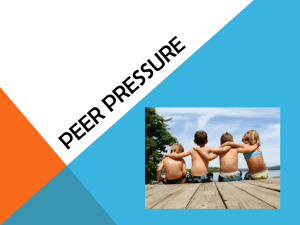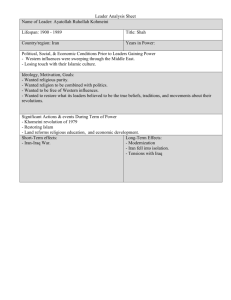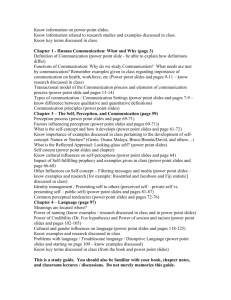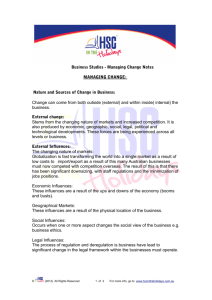Progressive Era PPT
advertisement
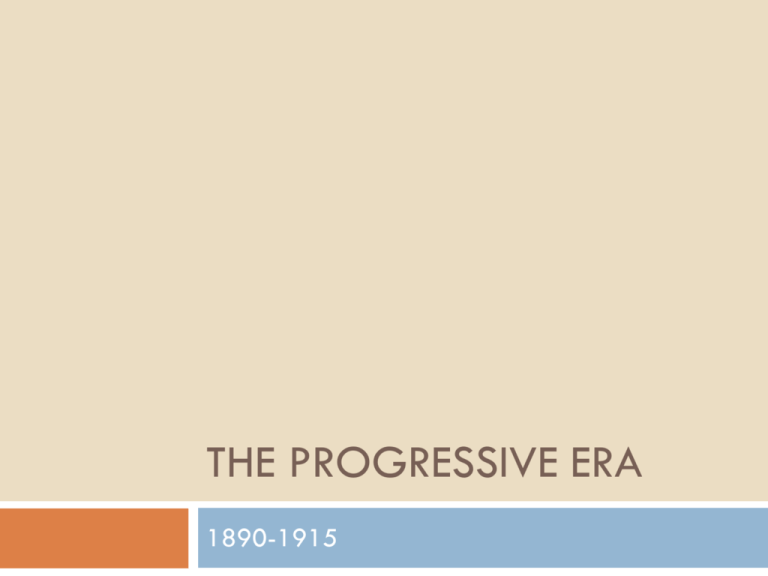
THE PROGRESSIVE ERA 1890-1915 The first modern reform movement Women’s suffrage Child labor laws Prohibition Conservation Trust busting Shorter working hours Voting reforms Graduated income tax Social welfare reforms Change: Immigration After the depression of the 1890s, immigration jumped from a low of 3.5 million in that decade to a high of 9 million in the first decade of the new century. After the 1880s, immigrants increasingly came from Eastern and Southern European countries, Asia, Canada, and Latin America. New Immigration 1880-1920s Change: Urbanization Reformer Jacob Riis documented poor immigrants in the slums on the lower east side in NYC in How the Other Half Lives Change: Industrialization Lewis Hine documented poor laborers, especially children, working long hours under harsh conditions. Other changes T. Roosevelt W. Wilson Technological changes that impact communication/transportation Development of modern social sciences New styles of presidential leadership New role of US as a power in world affairs Great White Fleet 1907 Middle Class Concerns Economic power concentrating in the hands of a few industrialists Rising power of big business Increasing gap between rich and poor Violent conflicts between labor and capital Dominance of corrupt political machines in the cities Minorities: racist, Jim Crow laws in the South Political reform and greater democracy William “Boss” Tweed Who were the progressives? Middle class Educated Residents of cities Protestants Optimistic about human nature Women found a public role in reform Ida Tarbell & Florence Kelley Who were the progressives? Fought for social reform and believed government power could be used to achieve it Believed that cleaning up an environment would improve the people living in it—(saloons, movie houses, temperance, prostitution, city beautiful movement) Carry Nation & Lincoln Steffens Who were the progressives? Feared immigration (Jane Addams an exception) Wanted to humanize big business, not eliminate it Believed in the virtue of efficiency Jane Addams & Frederick Taylor Influences Susan B. Antony & Elizabeth C. Stanton Horace Mann Reformers (1840s) Populism (1890s) Grimke Sisters W. J. Bryan Mary Lease Dorothea Dix Influences Pragmatism--practical. From John Dewey and William James. Pragmatists believed that people should take a pragmatic or practical approach to morals, ideals, and knowledge. They should experiment with ideas and laws and test them in action until they found something that seemed to work well for the better ordering of society William James (top), John Dewey (bottom) Influences Scientific Management—efficiency. From Frederick Taylor. Businesses and governments should organize in the most efficient manner possible. Time and motion studies efficiency Influences Gladden Rauschenbusch Social Gospel—Christians have social responsibility (Washington Gladden, Walter Rauschenbusch) Goals of the movement were ending child labor, a weekly day off, a living wage, improved working conditions for women, and religious/moral education for the poor. Because they stressed God’s love for all over damnation, it was known as a “church of love.” Influences Professionalism—growth of professions and professional organizations. American Medical Association American Bar Association American Federation of Teachers Influences Civic organizations National Association for the Advancement of Colored People Society of American Indians (1911) An 1890 photo of Carlos Montezuma, a member of the Society of American Indians Influences Presidents Wilson and T. Roosevelt Alice Paul Charismatic leaders/feminists Margaret Sanger Eugene V. Debs W. E. B. DuBois Influences Ida Tarbell Lincoln Steffens Upton Sinclair Ray S. Baker S. S. McClure David G. Phillips Writers (i.e. Muckrakers) Influences William Glackens George Bellows Robert Henri John Sloan George Luks Artists (i.e. Ashcan School) Influences Booker T. Washington & Tuskegee Inst. Niagara Movement Influences IWW Labor leaders & unions Knights of Labor AF of L American Railway Union S. Gompers E. Debs Bill Haywood
